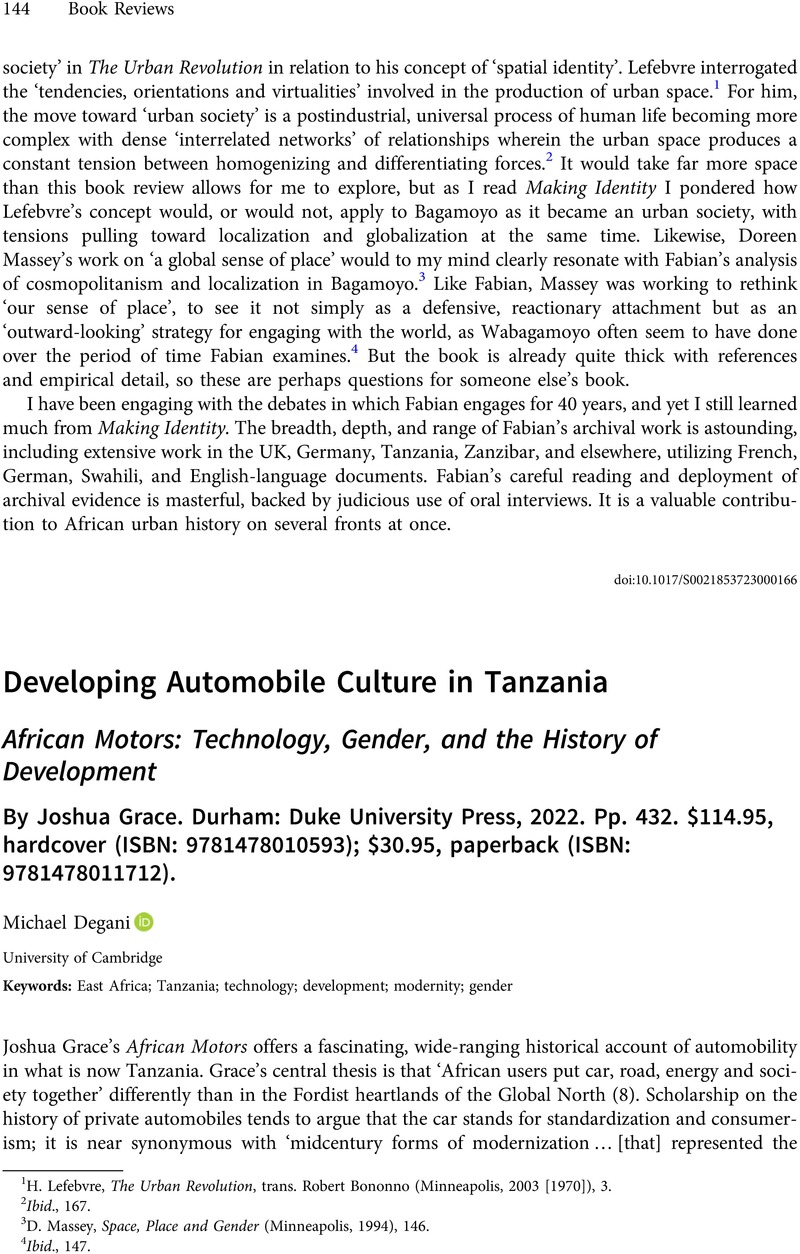No CrossRef data available.
Published online by Cambridge University Press: 17 February 2023

1 e.g. Karp, I., ‘Development as personhood: tracing the contours of a moral discourse’ in Knauft, B. (ed.), Critically Modern: Alternatives, Alterities, Anthropologies (Bloomington, IN, 2002), 62–104Google Scholar; Jackson, M., Life Within Limits: Well-being in a World of Want (Durham, NC, 2011)Google Scholar.
2 Guyer., J. I. ‘Wealth in people and self-realization in Equatorial Africa’, Man, 28:2 (1993), 243–65CrossRefGoogle Scholar.
3 Delehanty, S., ‘From modernization to villagization: the World Bank and Ujamaa’, Diplomatic History, 44:2 (2020), 289–314CrossRefGoogle Scholar.
4 Lofchie, M., The Political Economy of Tanzania (Philadelphia, 2014), 42CrossRefGoogle Scholar.
5 e.g. Brownell, E., Gone to Ground: A History of Environment and Infrastructure in Dar es Salaam (Pittsburgh, 2020)CrossRefGoogle Scholar.